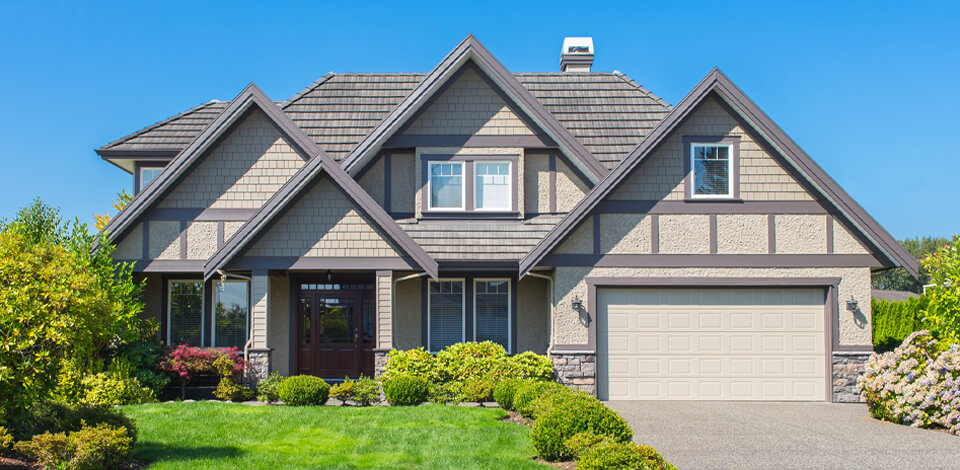
If you decided to get into real estate photography business, do not hurry up and make a business plan. In 2008, when I started my business, I spent much time and money in vain. Today, I can advise you and share real estate photography tips & tricks you should know in order to start working successfully.
When you are just starting, you may have many questions, including how much to charge for shooting, what lens to use, how to promote your services, etc. Below, I’ll answer all the main questions to help you build a successful real estate photography business in your area.
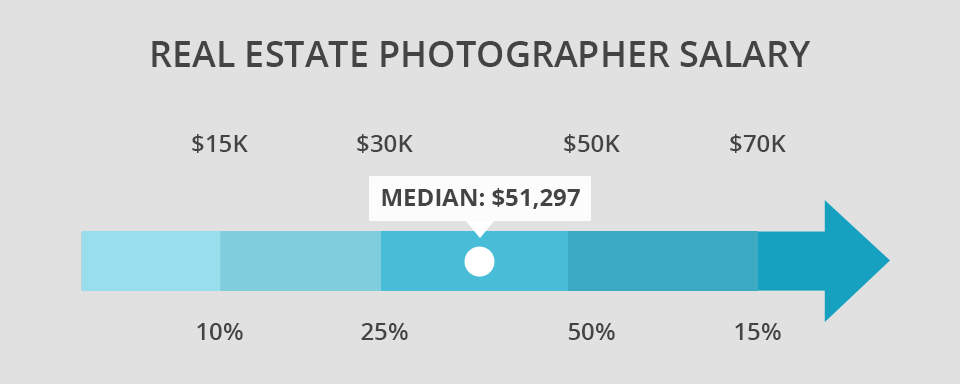
The average real estate photography salary is about $51,297. If you are just learning the basics, we recommend charging $80 per listing. When creating a price list, take into account multiple factors, including all the time you’ve spent on shooting, preparation, and image processing.
If you're new to the photography industry, you might need to buy equipment. Take this into account when creating the price list. Besides, prices depend on where you live. As a rule, photographers from big cities earn more.
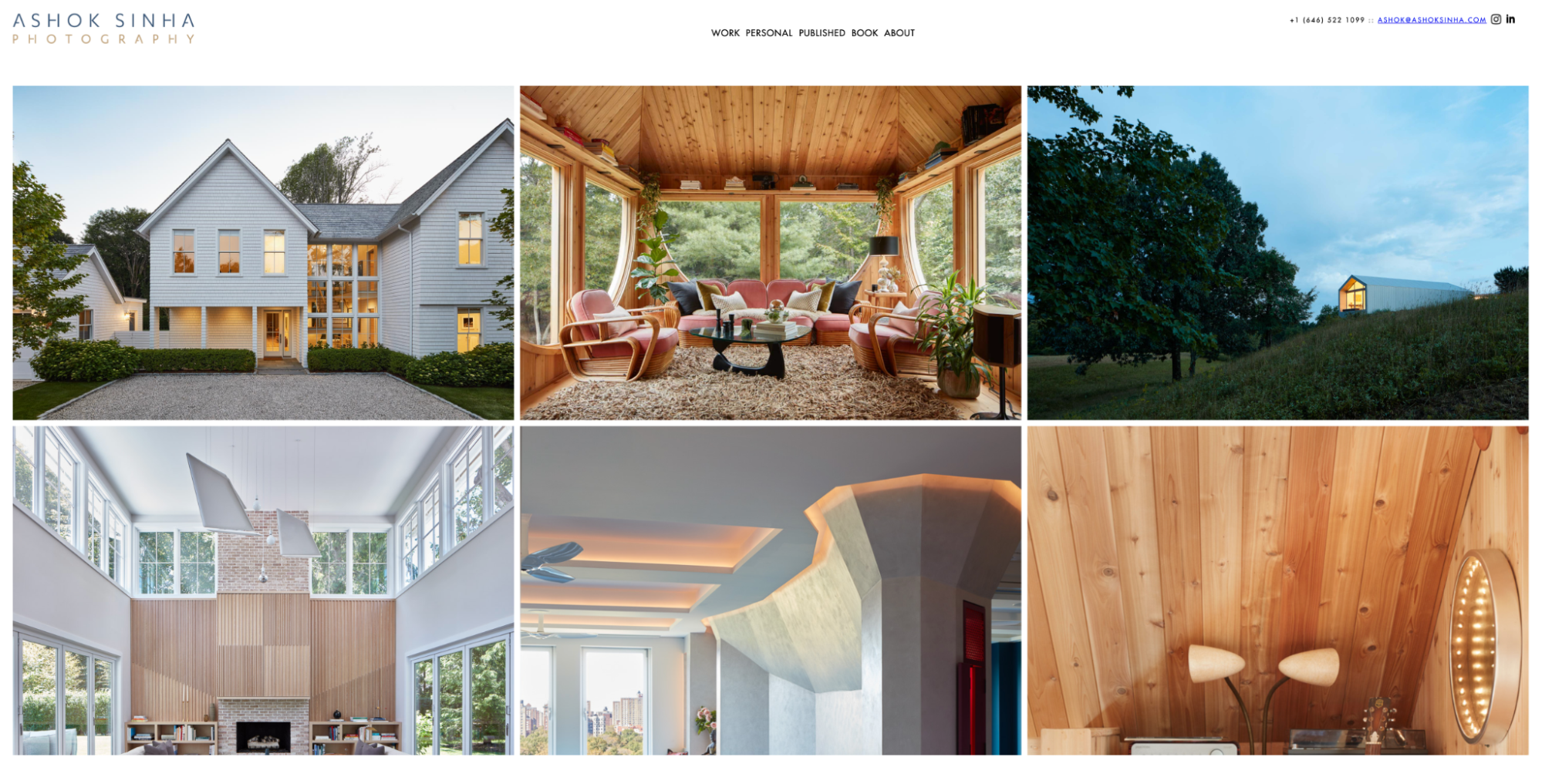
Nowadays, becoming a real estate photographer might be difficult without a professional portfolio that showcases your best works. If you haven’t worked on such projects yet, you can create a photography portfolio by shooting houses of your friends and relatives. When creating a portfolio with clients’ photos, check whether you have the right to use these images for promoting your services. It’s better to add this clause to the real estate photography contract beforehand.
Alternatively, you take pictures of beautiful buildings nearby. Try taking several photos of the same building during the day and in the evening to demonstrate your photography skills in different lighting conditions.
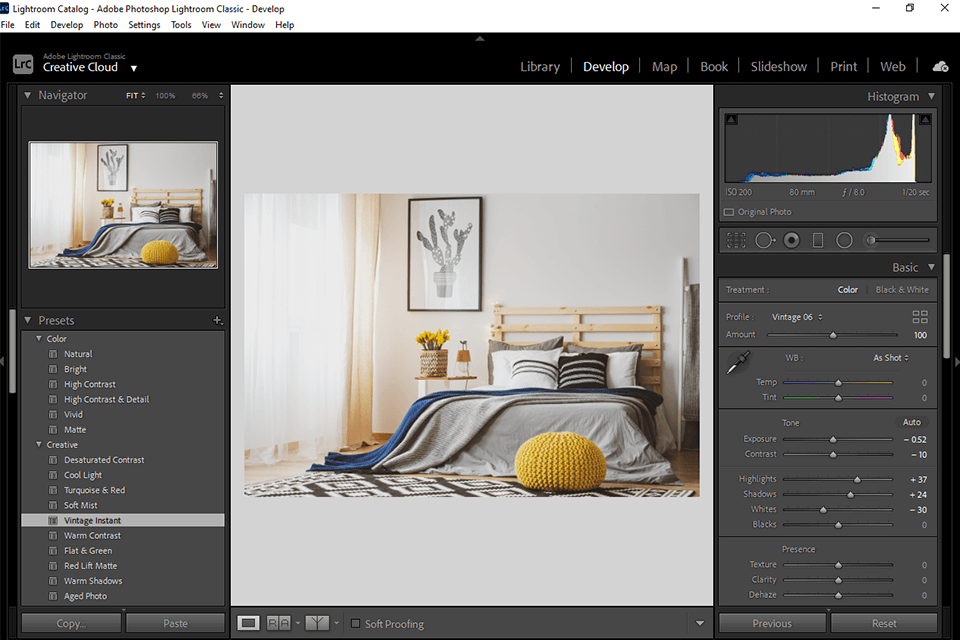
The next important step is editing. With the real estate photography software, you can crop images, adjust sharpness and exposure. Besides, you can use photo culling software to optimize your workflow. Professionally edited photos will help you find new clients.
Since clients expect quick results, you need to learn how to use photo editing software for PC and Mac. For instance, you can use Photoshop and Lightroom to enhance your images. Both programs offer excellent tools for high-quality editing and support batch processing.
If you don’t have advanced editing skills, you can contact a professional service. The team of retouchers will enhance your shots according to the industry’s standards. It will help you attract more clients.
Moreover, these professionals can not only fix issues with exposure, contrast, and color correction resulting from wrong camera settings but also offer virtual staging. This option is especially suitable for beginners who lack experience and skills. You can delegate post-processing to professionals to increase your income.

If you are wondering how to get into real estate photography, you should remember that before you start working with clients, you must get a decent education and skills. Check out Photoshop tutorials on YouTube to learn how to use this software. Professional photographers Parker Walbeck and Serge Ramelli created these tutorials for newbies.
If you take lessons from a practicing photographer, you can keep up with the latest trends. Many real estate photography classes and workshops will provide you with an excellent knowledge base. Besides, you can take offline classes to strengthen the knowledge you gained.
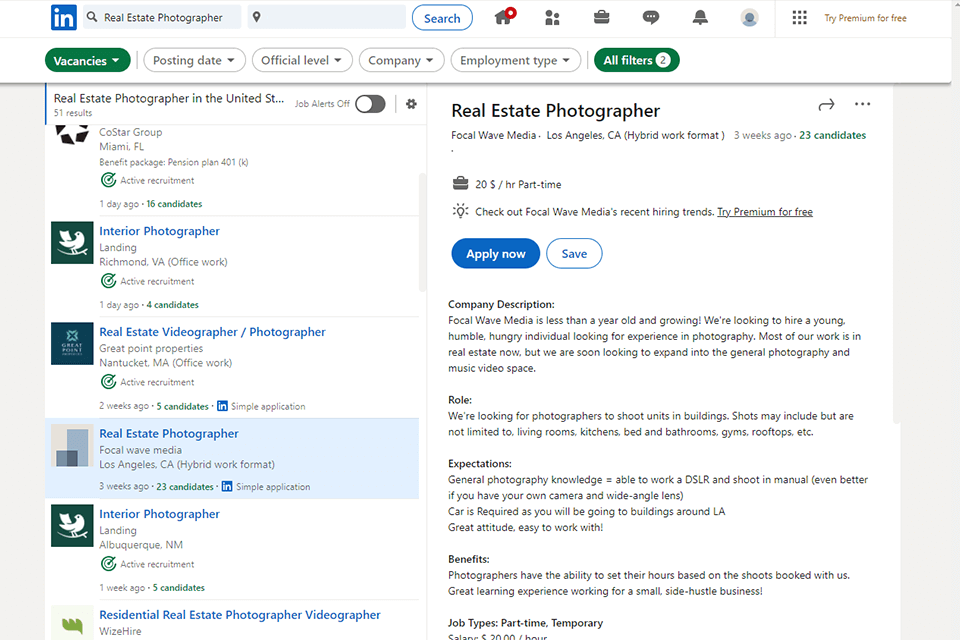
To find your first clients, visit real estate photography jobs websites, such as Upwork, Freelancer, Craigslist, and LinkedIn.
Upwork. It allows you to post an ad to find a job that suits your skills. The clients on the site are reliable and pay well.
LinkedIn. After registering an account on this social network, you will be able to post vacancies and communicate with potential clients. If you set up your profile correctly, people will immediately understand whether you meet their requests.
Freelancer. The site works great for posting portfolios and showcasing your expertise.
Craigslist. The platform works great for different industries and has many subcategories so that people could find jobs faster. You can sort jobs by location, salary level, and skill requirements.

Real estate photographers often use a technique known as bracketing. It will be useful for anyone interested in HDR photography. Thanks to this method, you can shoot with different exposures and combine images in free HDR software to create a perfect shot.
By mastering the basics of HDR real estate photography, you can fix lighting problems and focus on the necessary details. First, you need to mount your camera on a tripod and set a frame. Then, take multiple shots at different exposures. Use a self-timer or camera remote for better results.
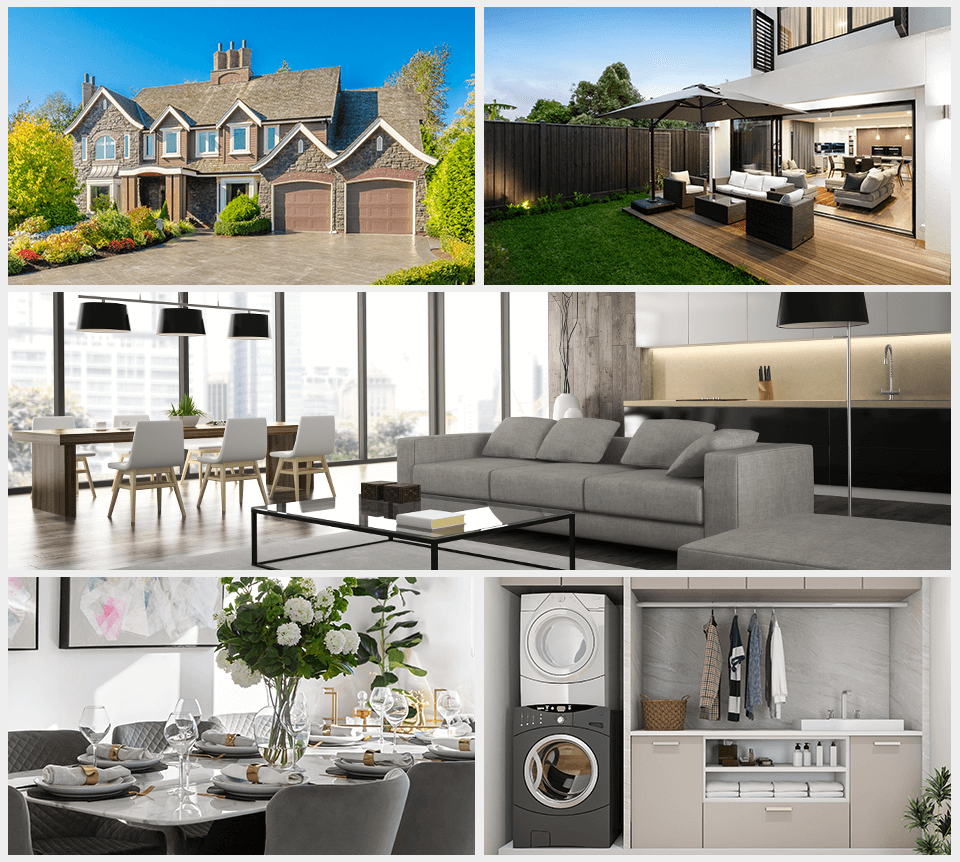
You can also try compiling a list of references before shooting. This will save you time and help take great real estate shots.
Check out the list of photos that you need to take:
Start with capturing the front exterior of the property from different angles and distances. These shots provide a first impression and set the tone for the rest of the images. Pay attention to the composition, highlighting the property's unique features and curb appeal.
Next, focus on wide-angle shots of all the main rooms, such as the bedroom, study, kitchen, living room, and more. These images provide a spacious and inviting view of the property, allowing potential buyers to envision themselves living in each space.
Don't forget to capture photos of feature rooms like the laundry, garage, basement, or any other distinctive areas. These shots showcase additional selling points and help potential buyers understand the property's full potential.
In addition, detailed shots work great for capturing the interior elements. Highlight architectural details, fixtures, and finishes that make the property stand out. Close-ups of these elements add depth and visual interest to your portfolio.
Remember to pay attention to lighting, composition, and staging throughout the entire process. Proper lighting techniques, well-composed shots, and thoughtful staging contribute to creating appealing and impactful real estate photographs.
Since every home is different, discuss everything with your clients in advance. This will help you deliver the desired result.
Many beginner photographers don’t pay attention to the importance of photography insurance. You can find decent insurance coverage for less than $2,000 a year. It will help you avoid several risks.
First, insurance will help you protect your gear and avoid paying for broken equipment. For instance, you can get drone insurance.
If you or your team member falls and breaks something during the shooting, you can be sure that your medical bills will be paid.
Insurance helps protect your customers. If a client trips over a wire during the shoot, the insurance company will take responsibility.
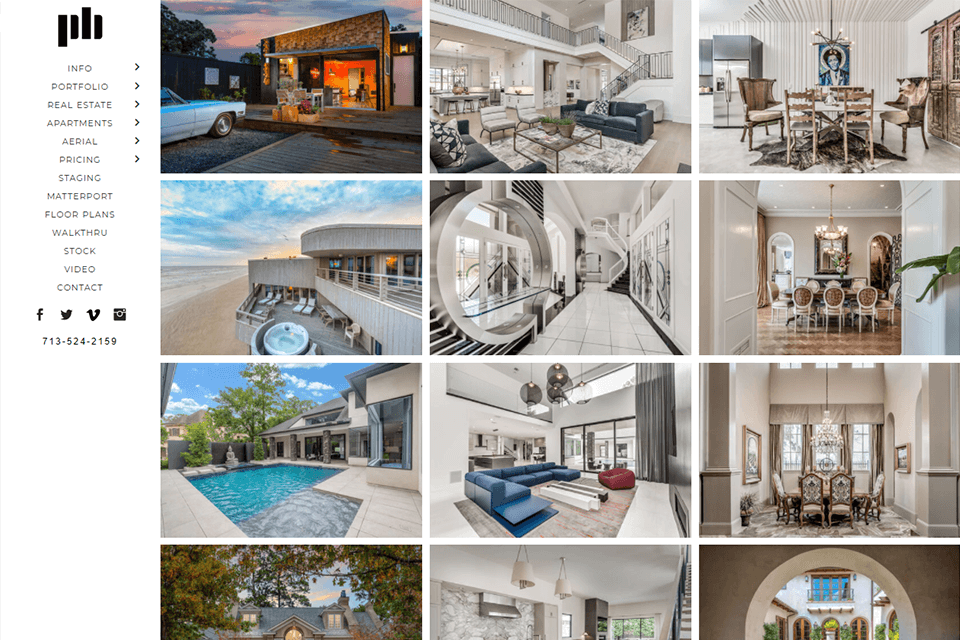
If you don't know how to start real estate photography business, start by creating an online portfolio. You can use it to post photos and a photography price list on one page. With the help of website builders for photographers, you can create an online portfolio for free. Such programs include templates and custom designs.
Use Squarespace, Wix, or WordPress to build a website and promote your services. It’s better to use a unique domain name for your site to make it look more professional. Alternatively, you can use a free platform like 500px, Behance, Flickr, or Instagram to showcase your projects.
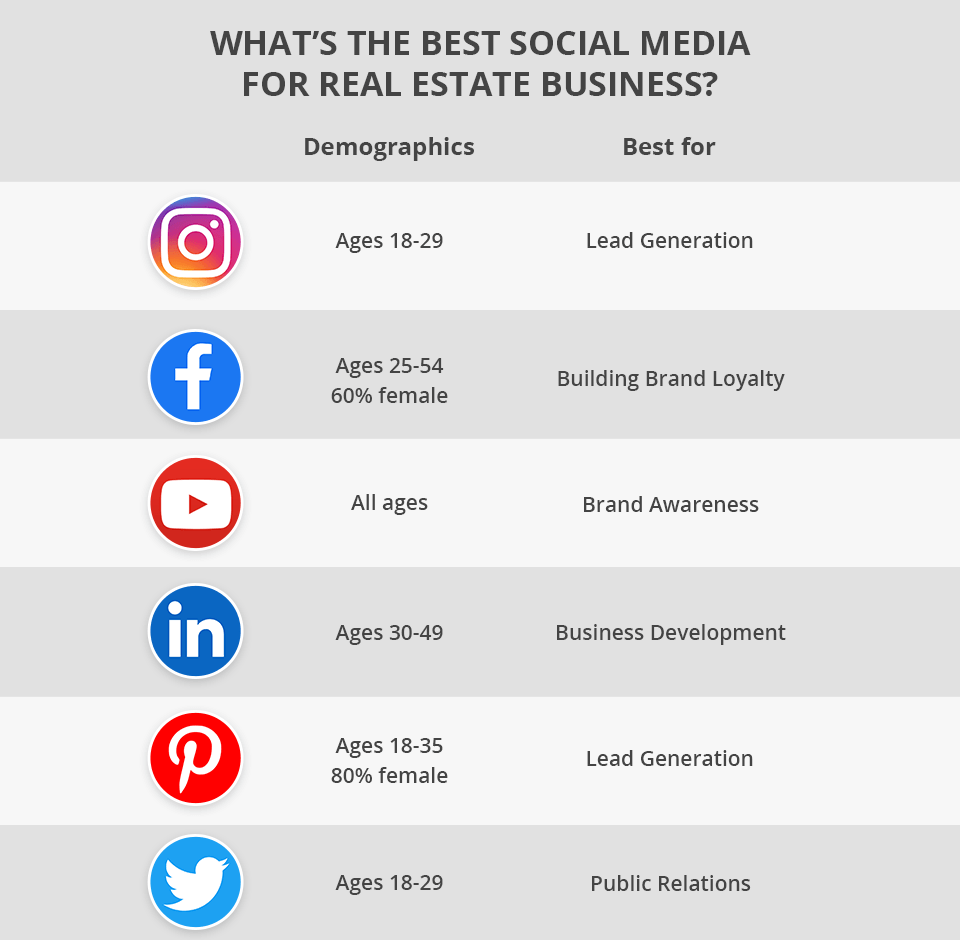
You can use different photography marketing methods to promote your brand even before becoming a real estate photographer. For instance, you can use popular social media for photographers to increase your client base. Make sure to create profiles on Facebook, Instagram, or Twitter.
Besides, by using SEO services for photographers, you can improve your website’s rankings. You can also print real estate photography business cards and give them to potential clients.
To stand out from other photographers, you need to come up with a unique proposal. You can add real estate videography services to your list. It will help you find clients among real estate agents. As a rule, it is more convenient to work with one person than to hire several professionals. Video content is quite popular in the real estate industry. Real estate videos allow clients to see the size of the building and learn more about the neighborhood. Professional video shooting starts from $1,000.
Business owners are very interested in networking since it helps them to get new clients. We recommend attending conferences and business meetings. Besides, you can partner with real estate agencies to grow your customer base. While you might need to share the fee with the agency, it’s a great solution for beginners.
Alternatively, you can go to photography fairs to meet professional real estate photographers. Many experienced photographers are looking for assistants. This is a great way for you to learn from experience and find new clients.
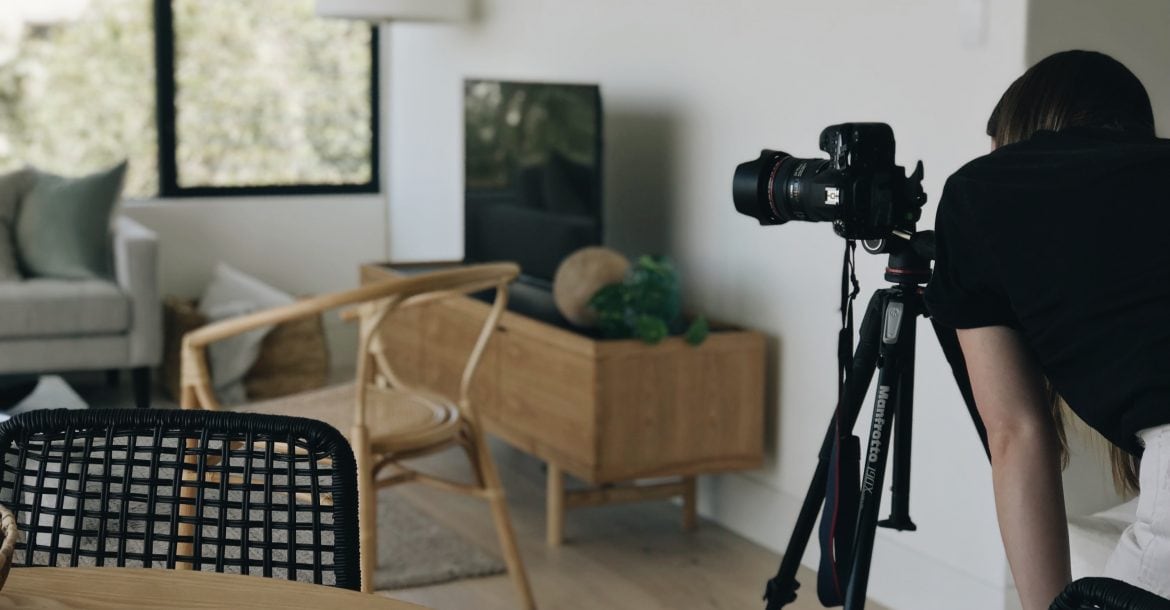
You don't have to buy the most expensive equipment to take high-quality real estate photos. Your camera for real estate photography should support multi-exposure bracketing and be compatible with a remote flash. A DSLR camera for beginners is a great choice as it enables you to use interchangeable lenses.
A camera with a good sensor allows you to take high-quality shots with low noise in different lighting conditions. The Canon EOS Rebel T6s is a great solution. If you want to buy a more expensive model, take a closer look at the Canon EOS 6D Mark II that will come in handy for anyone interested in high-end real estate photography.

Professional real estate photos can turn even a small building into a spacious and large one. Thanks to wide-angle lenses with a short focal length, you can increase the space in your photos. Thanks to the improved perspective, they can be considered an ideal lens for real estate photography. We recommend buying a lens with a focal length from 10 to 24 millimeters or from 16 to 35 millimeters. The Sony 16-35mm Vario-Tessar T FE F4 ZA OSS E-Mount Lens is one of the best wide-angle zoom lenses on the market.

Before shooting, you need to buy real estate photography equipment, including a tripod. It will greatly simplify the process. When buying a tripod for real estate photography, pay attention to the sturdiness of the model and its maximum extension height. The stronger the tripod, the more weight it can support. By stabilizing your camera, you will get clear images.
A carbon fiber tripod is one of the most durable models with a stable construction. The Manfrotto MT190CXPRO4 is a perfect model from the trustworthy tripod brand. Pay attention to the maximum tripod height since it will allow you to use the viewfinder without bending over the tripod.

If you want to learn real estate photography, you need to go deeper into different shooting options. Thus, by mastering real estate aerial photography, you can take spectacular shots. Typically, photographers use drones for aerial photography. A good drone for real estate photography allows creating a virtual tour. You can move the drone from room to room to show the scale of the building. Besides, drones can be used for taking landscape shots. If you plan on using them for work, keep in mind that they cost at least $1,000.
We recommend considering the Phantom 4 Pro, and Mavic Pro for aerial photography.
If you are looking for an indoor drone, then the DJI Mini 2 is your choice.
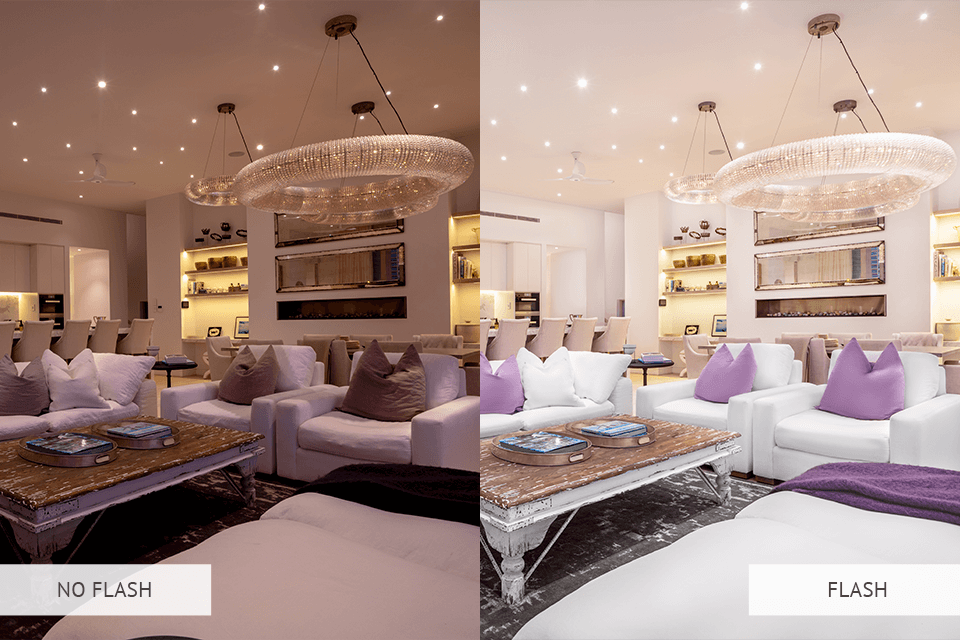
Flash photography allows you to take beautiful shots in low light. Some flashes create harsh lighting, which might result in deep shadows. To fix the vignette, you need to put in a lot of effort. This is why it’s better to use a flashgun instead of a camera flash. It will allow you to move around the room freely.
Try directing your flash at a wall, so it bounces off the light. This will help you create a softer light in the picture. The Canon Speedlite 430EX III-RT Flash is a great option for budget-conscious users.
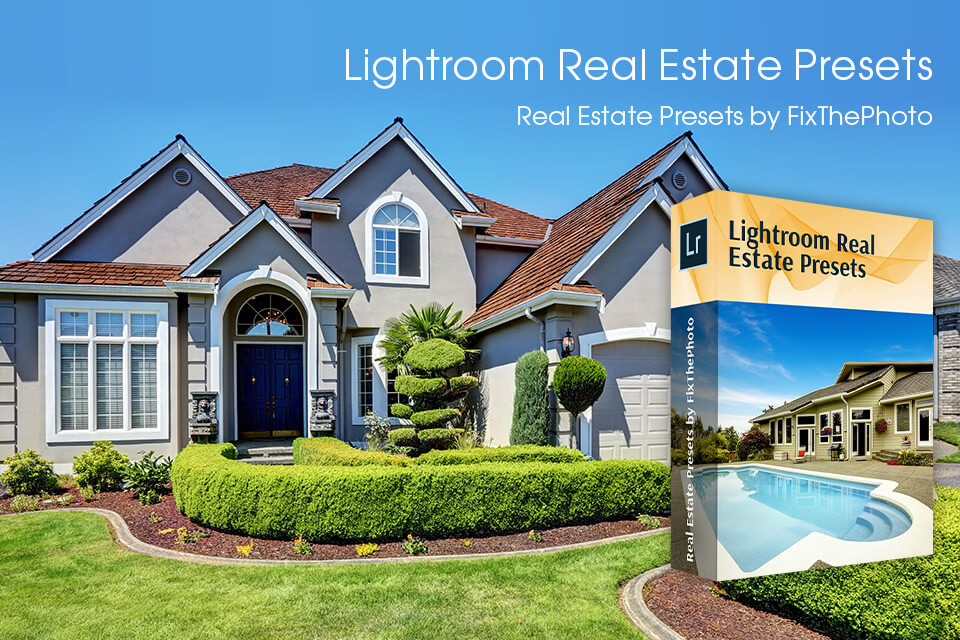
If you don't want to waste time on editing, try using these Lightroom presets. With them, you can quickly improve your real estate photos. The collection includes filters or different genres, including interior photography, exterior, drone, and night photography.